A new business on the tip of the pencil: will there be esfiha after the pandemic?
Download available at pdf , Epub and Mobi
A new business on the tip of the pencil: will there be esfiha after the COVID-19 pandemic?
Authors: Gabriela Baptista Justi, Rafael Sales Brito, Helena Araújo Costa and Solange Alfinito
Summary
After a trip to Lebanon, Rafi decided to undertake the gastronomic business with an authentically Arabic esfiharia, from the ingredients to the way of preparation. Because he had no knowledge and experience in management, Rafi hired AD&M Business Consulting to increase his confidence in the company's potential and performance. However, the entrepreneur did not expect the beginning of a pandemic and the consequent changes in the market. Now he questions what data and information still match the reality of his business. This case invites participants to follow the design of a new venture, combining aspects of business creation and market research that reflect on demand, costing and pricing. The questions for debate aim to understand how the studies carried out can help the entrepreneur in opening the company and how to act in the face of a sudden change.
Keywords :Entrepreneurship; Costs; Pricing; Feeding; Business Creation; Market research.
Abstract
After a trip to Lebanon, Rafi decided to undertake the gastronomic business with an authentically Arabic esfiha shop, from the ingredients to the way of preparation. As he does not have any knowledge and experience in management, Rafi hired AD&M Consultoria Empresarial to increase his confidence in the company's potential and performance. However, the entrepreneur did not expect the start of a pandemic and the consequent changes in the market. Now he questions which data and information still match the reality of his business. This case invites participants to follow the design of a new venture, combining aspects of business creation and market research that reflect on demand, costing and pricing. The debate questions aim to understand how the studies carried out can help entrepreneurs to start a business and how to act in the face of sudden change.
Keywords : Entrepreneurship; Costs; Pricing; Food sector; Business Creation; Market research.
Lebanese heritage and passion for gastronomy: the dream of owning a business is born
Since he was a child, Rafi has been preparing dishes that refer to his Lebanese descent, always being highly praised by his family and friends. Due to his proximity to gastronomy, on a trip to Lebanon in 2016, Rafi deepened his knowledge of traditional cooking techniques, becoming an admirer of the original open esfihas (Figure 1).
Given the success that his dishes were already having among people close to him, upon returning to Brasília, Rafi decided to undertake through private events promoted at his home. He prepared and served esfias at private celebrations and sold them to acquaintances. Thus, in early 2019, realizing the potential of the business, Rafi decided to fulfill his dream of opening an authentically Lebanese esfiharia, from the ingredients to the method of preparation and environment.
Graduated in International Relations, at the age of 30, the entrepreneur was optimistic, as the Brazilian GDP grew for the third consecutive year and the market seemed to resume growth since the 2016 crisis. It was expected that the Brazilian economy would continue to develop due to the increase in the per capita income of the population, mainly boosting the service and retail sectors.
From this perspective, even though he had no experience in management, Rafi started to search for information on the internet and talk to entrepreneurs in the food sector, to obtain relevant knowledge to start the business. The entrepreneur already had an idea about the investment needed to open the company and hoped to establish a partnership with his mother, who would have 50% of the initial capital.
He was determined, as he knew what the business would be and believed that he would conquer his share of the market for the gastronomic experience that sought to transport customers to the Middle East. For him, the esfihas found in Brasília are different from the original conception model. Therefore, the value proposition of the new business revolves around the roots of one of the most popular dishes in the country.
When studying about the topic, Rafi felt that he needed a little more security before making the investment. In this way, he sought help from AD&M Business Consulting to find reliable data and information that would guide him in the formulation of strategies to enhance his business and evaluate the company's future performance. The consultants in charge understood that the customer's needs were to analyze the behavior of demand, the costs involved in the business and the appropriate prices for the products, considering the market. In this way, the entrepreneur would have greater security to build the business he dreamed of.
Step One: Is There Demand for Rafi's Passion?
After talking to the entrepreneur, the consultants carried out studies on the market, business maturation time, demand seasonality and estimate of the general demand of the business. This path was based on the knowledge acquired in marketing research and from Malhotra (2019), an author who indicates the principles and criteria for the collection of external commercial secondary data. Thus, the consultants were able to understand that the general demand would tend to behave as shown in chart 1:

In addition, the consultants emphasized the importance of understanding the seasonality of demand through a study of competing companies, as shown in Table 1. Seasonality serves to predict the variations that may occur with demand in certain periods, usually linked to external factors, based on data collected from competitors. Therefore, the percentages present in the table refer to the increase or reduction in demand for each establishment, which allows the entrepreneur to anticipate opportunities and risks for the company after its opening.

When he carefully analyzed the average of the percentages calculated from the variation in demand of competing companies, Rafi realized that demand usually reduces in the first months of the year and in September. However, when observing the difference in the percentages of January (-19%) and July (17%), the entrepreneur began to question what else could be affecting the demand for esfihas, and what strategies can be adopted to reverse unfavorable moments, because even in the face of a seasonal reduction, he still believed in the business and was motivated to move forward.


Rafi also noted, from the numbers collected, that, although the estimate of general demand does not show major deviations in the first months, the maturation rate is negative, that is, demand reduces over time. Although the consultancy advises that the reduction in demand is common to several companies in the first years, the entrepreneur was somewhat insecure, as the expected variation could considerably change his profit or even generate losses for the business, a situation he wants.
In this way, Rafi found himself reflecting on the viability and existence of a consistent market so that his gastronomic passion could become viable as a business, while realizing that he needed more information for assertive decision-making. Rafi was attentive, because he had seen a news article in Folha de São Paulo (Figure 2), which showed the five most frequent mistakes among entrepreneurs who, like him, are first-timers: overconfidence, lack of planning, confusion in personal and business finances, wrong choice of partners and commercial inability to make sales. He was alert not to commit any of these.
Second step: what will be the costs to make this dream possible?
As a second step, in order to provide more solid bases for the entrepreneur's decision, AD&M also calculated the company's monthly operating costs based on the absorption costing method, which charges the product for all the costs involved in its production. The goal was to provide Rafi with data that could help him prepare his cash and boost his results.
The expenses were then recorded, separated in a manner consistent with the demand previously found, through the Apportionment and Tracking techniques. Apportionment is the method in which fixed costs are proportionally separated between the products and services sold. Tracking, in turn, is a method in which variable costs are allocated directly to the respective products and services sold.

One of the most nebulous aspects for Rafi was the costs he would have to bear when deciding to open his business and establish it commercially, leaving this sporadic and informal production. He knew that he needed to consider both fixed costs such as rent, staff, cleaning supplies, among others, and not leave aside variable costs, such as the raw materials directly used in the esfihas and which would vary as production increased or decreased. The consultants assisted in mapping these costs so that Rafi had greater clarity on each of them (Appendix 1 and 2). In this way, it was possible to compile the projection of total costs to guide the entrepreneur's decisions.

Rafi knows that his esfihas are special and wants to offer customers a differentiated environment, which provides the ideal consumption experience and conveys the quality of his products and services. Even though the costs were representative, the values were understood by him as the minimum possible to guarantee the value proposition. When Rafi saw all this organized, he was surprised by the clarity he was having about aspects that other entrepreneurs discover only after starting their operations, and that anticipated key aspects for their business.
But on the other hand, Rafi was still distressed, because in conversations with other gastronomy entrepreneurs, he heard that many expenses could arise after opening the business, turning on a yellow light in the mind of the entrepreneur, who feared that this could escape his control. Rafi was aware that the variable costs would be high due to the inputs used in the production of the esfihas, which were of the best quality. However, the sum of all costs made the entrepreneur question, for the first time, whether his business would be viable.
Third step: what price to charge for special esfihas?
Rafi observed the prices offered by competitors and thought: what price can I charge for my esfihas now that I will leave informality? The entrepreneur understood that he was not able to establish a price that paid the cost of the differentiated raw material and, at the same time, made sense in the face of the competition and was fair from the customer's perspective.
In view of the demand, total costs, profit margin and the objective of having its company recognized for excellence, the consultancy adopted the Markup method and the High Low Price strategy in the pricing of the company's products. Thus, the entrepreneur could feel more secure in establishing the sales price in a more appropriate way.
The consultants explained to Rafi that the Markup method is a multiplier index that is applied to the costs of a product to obtain the selling price, according to the profit margin that is intended to be achieved. The High Low Price strategy, on the other hand, is calculated based on a high price, which decreases over time.
From this perspective, despite knowing that the higher the price, the higher the value expected by the public, the entrepreneur thinks that the calculations provided very discrepant and unattractive values to the consumer. Given this, Rafi was afraid of not being able to reach prices that were compatible with the market and would bring an interesting margin to his new business.

What now?
After all the analyzes carried out, the entrepreneur was surprised by the COVID-19 pandemic, which drastically changed the market and postponed his dream of undertaking gastronomy. Now, Rafi was reflecting on the new conditions of the economy, such as the loss of purchasing power of the population and the increase in uncertainties about the future.
The pandemic still continues with its undefined course and Rafi is reflecting on what information he found previously still matches reality and can be considered in his decision-making. In this sense, costs may have been strongly affected, as well as the consumer's willingness to pay for the products.
The reality that presents itself shows Rafi that he would not be able to start a new project or update it in such detail. Thus, the entrepreneur is uncertain whether he should maintain his business model and how he could adapt his value proposition to the new situation (Appendix 3).
Discussion questions:
1. Based on the seasonality identified, suggest strategies for Rafi to prepare for times of reduced demand.
2. After analyzing in detail the fixed and variable costs of esfiharia, what practices do you suggest Rafi adopts to manage the higher costs identified?
3. What are Rafi's challenges in forming your sales price? How could he act so that his prices were perceived as fair by his potential customers?
4. Considering the High Low Price strategy adopted by the consultancy in the pricing of the company's products before the pandemic and the subsequent changes in the market, do you believe that Rafi should continue with this strategy?
5. Given the data, do you suggest that the entrepreneur go ahead with the opening of the esfiharia?
6. How can Rafi adapt to reverse the unfavorable perspectives pointed out?
7. If Rafi opted for a new business model, what could it be? In this model, what would the demand and cost structure look like?
References
IPEA, 2021. Available at: https://www.ipea.gov.br/portal/images/stories/PDFs/conjuntura/210212_nota_politica_fiscal_13.pdf . Accessed on: Apr. 15, 2021.
MALHOTRA, N. K. Marketing Research: an applied orientation. Porto Alegre: Bookman, 2019.
GDP rises 0.6% in the third quarter driven by services and industry. News Agency, 2019. Available at: < https://agenciadenoticias.ibge.gov.br/agencia-noticias/2012-agencia-de news/news/26172-gdp-rises-0-6-in-the-third-quarter-pulled-by-services-and-industry>. Accessed on: Apr. 15, 2021.
The services sector has a record fall of 7.8% in 2020, according to IBGE. G1, 2021. Available at: https://g1.globo.com/economia/noticia/2021/02/11/setor-de-servicos-tem-tombo-recorde-de-78percent-em-2020-aponta-ibge.ghtml . Accessed on: Apr. 15, 2021.
About The Authors
I. Business Administration Student at the University of Brasília (UnB). Member of the ADM Casoteca team. Former member of AD&M Consultoria. Email: 190028220@aluno.unb.br
II. Business Administration Student at the University of Brasília (UnB). Member of AD&M Consultoria. Email: 190037024@aluno.unb.br
III. Associate Professor II of the Department of Administration of the University of Brasilia. Coordinator of the ADM Casoteca. Professor of Contemporary Topics 1 and 2 and Introduction to Administration. Email: helenacosta@unb.br
IV. Associate Professor of the Department of Administration of the University of Brasilia. Researcher accredited to the Graduate Program in Administration (PPGA UnB). Professor of Marketing, Social and Sustainable Marketing and Inferential Methods. Email: salfinito@unb.br
Gallery
Figure 1 – Rafi's Esfihas
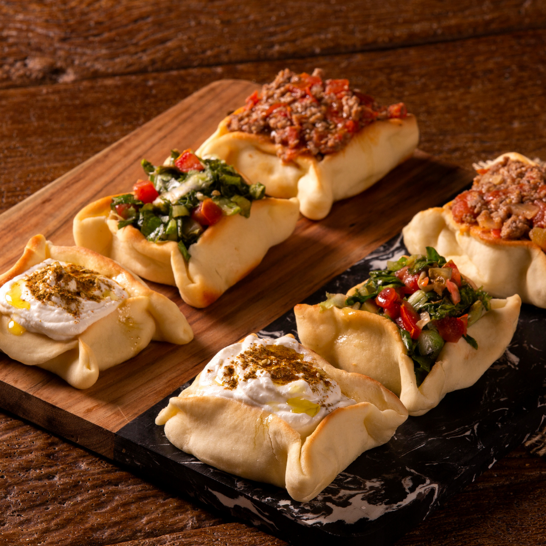

Figure 2 – Report from Folha de SP
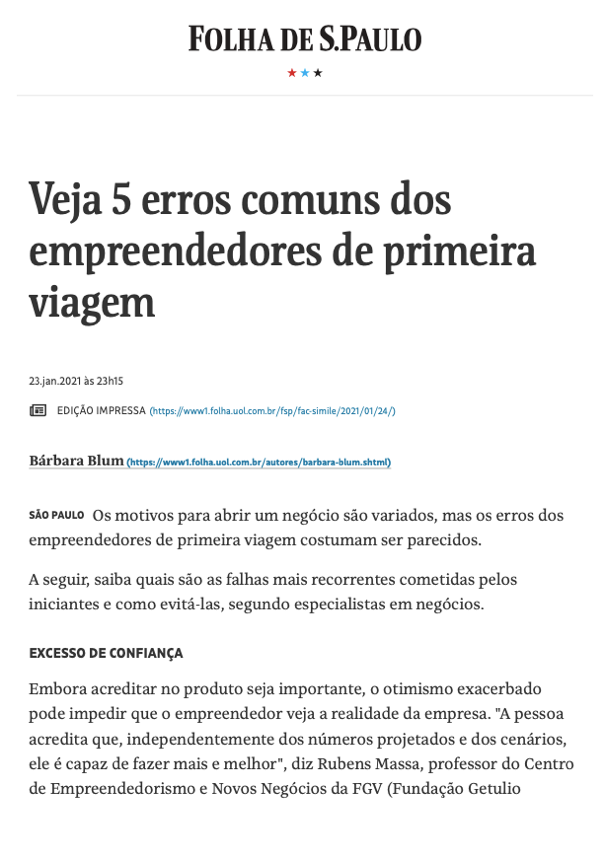
For full report: https://www1.folha.uol.com.br/mpme/2021/01/veja-5-erros-comuns-dos-empreendedores-de-primeira-viagem.shtml
Annex 1: Detailed tables of Fixed costs (referring to 2019)
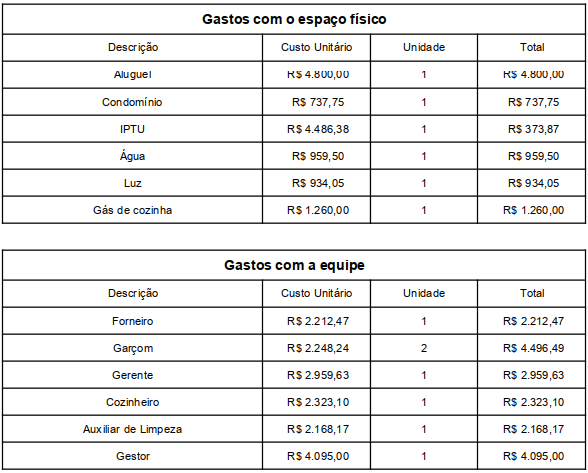
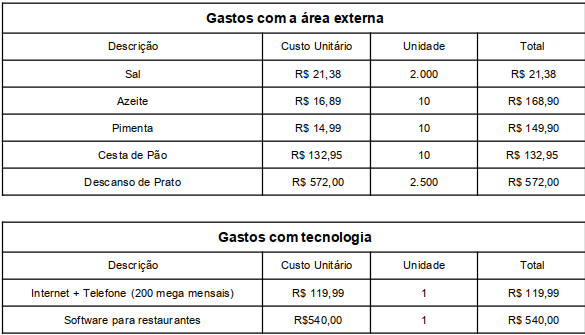
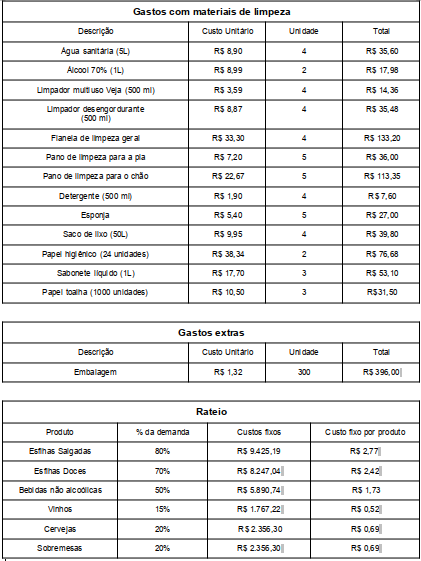
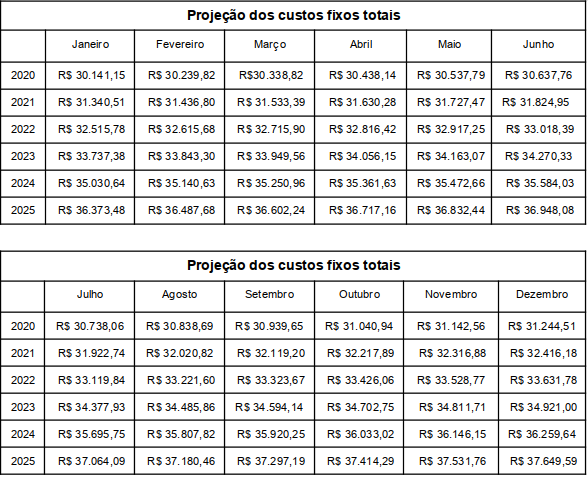
Annex 2 - Detailed variable costs
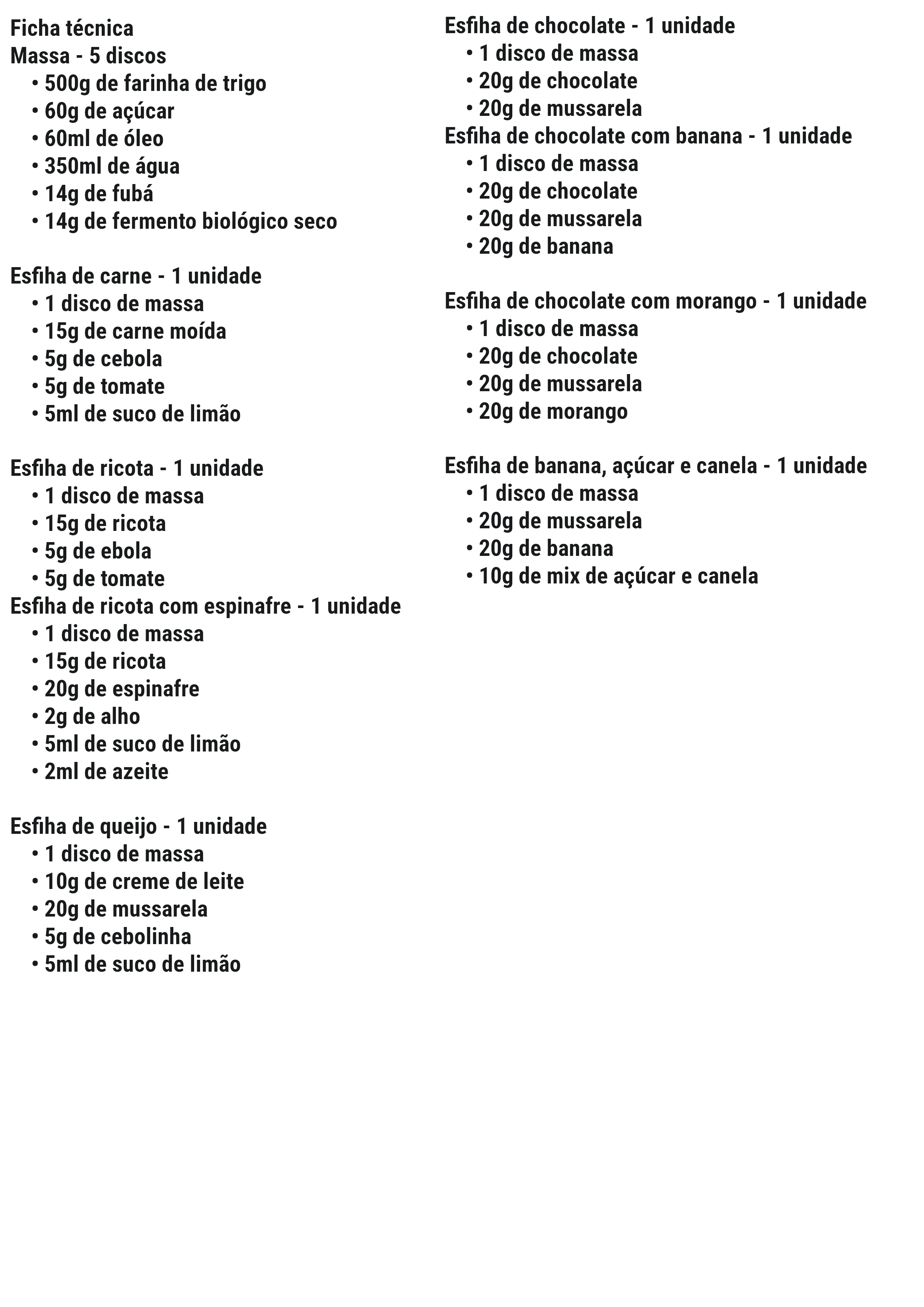
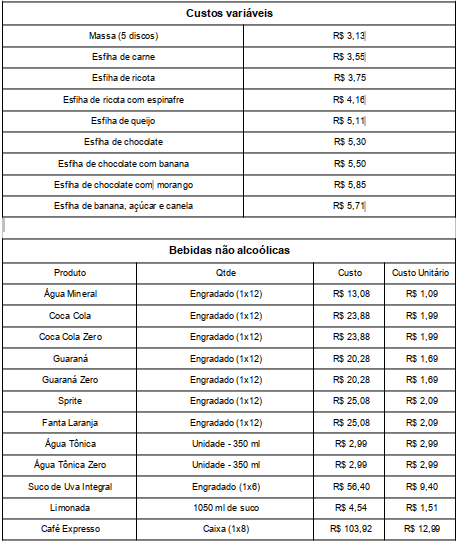
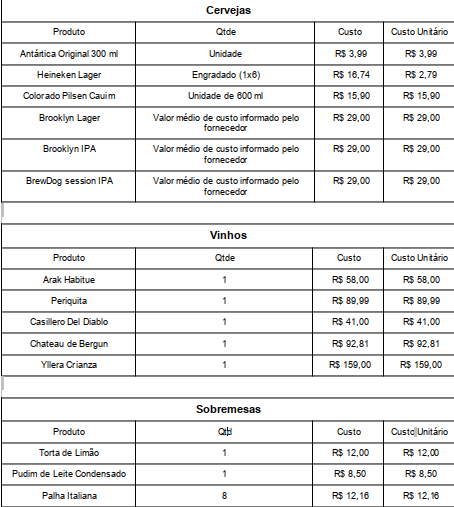
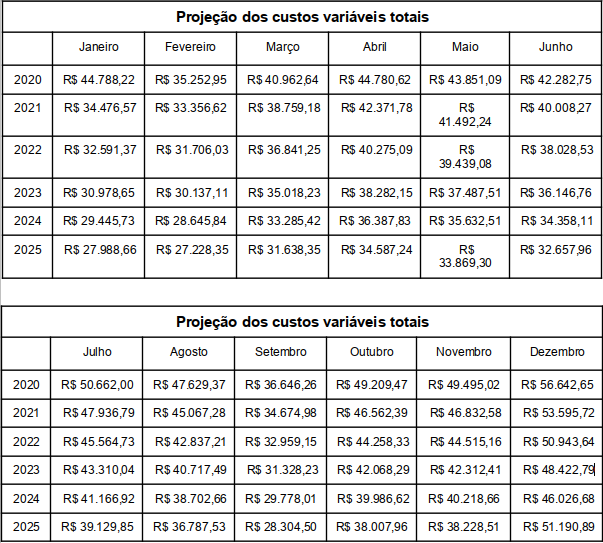
Annex 3 - Performance of the services sector in 2020

This case was written based on information provided by the company, information available in the media and/or based on other references cited. It is not the authors' intention to evaluate or judge the company in question. This text is intended exclusively for academic study and discussion, and its use or reproduction in any other form is prohibited. Copyright infringement will subject the offender to the penalties of Law No. 9,610/1998.
